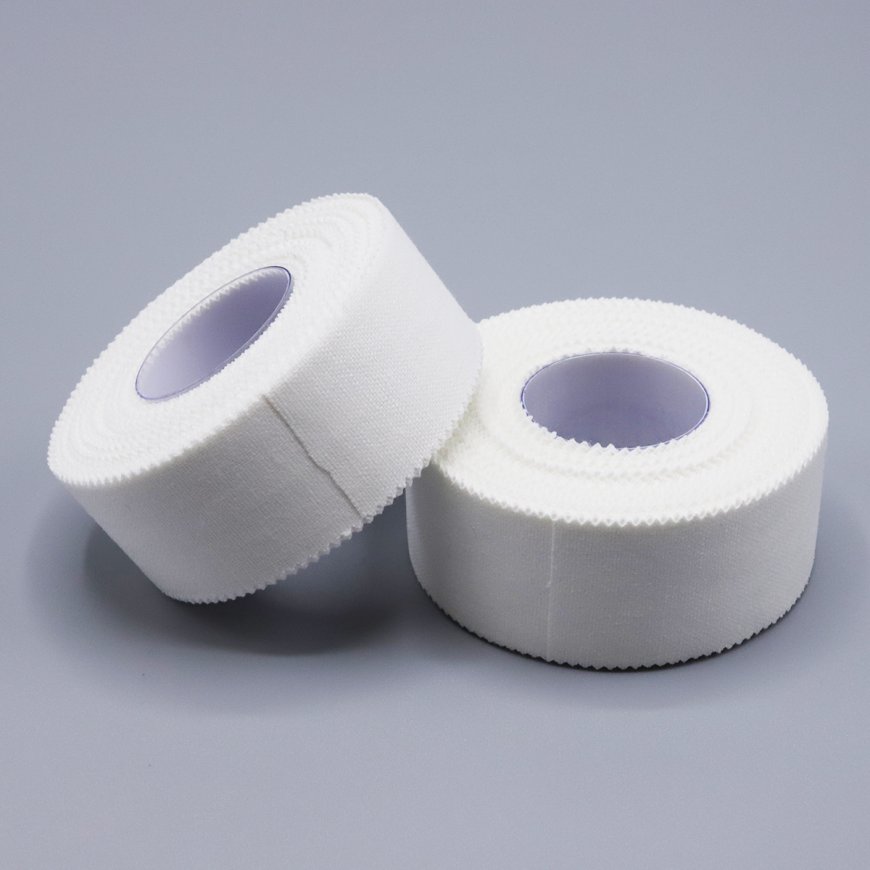Adhesive Tape: The Ultimate Guide to Types, Uses, and Industry Insights
Adhesive tape has revolutionized the way industries and individuals secure, seal, and protect materials. From simple household fixes to critical applications in aerospace and electronics, adhesive tapes offer versatility

Adhesive tape has revolutionized the way industries and individuals secure, seal, and protect materials. From simple household fixes to critical applications in aerospace and electronics, adhesive tapes offer versatility, reliability, and strength. This article explores everything you need to know about adhesive tape, including types, manufacturing, applications, innovations, environmental considerations, and key players like 3Block, a leading Israeli company in this sector.
What is Adhesive Tape?
Adhesive tape is a combination of a backing material and a pressure-sensitive adhesive that allows it to stick to various surfaces when pressed down. It eliminates the need for fasteners like screws or bolts and is widely used across multiple sectors.
The key components of adhesive tape are:
-
Backing material (paper, plastic film, cloth, foam, etc.)
-
Adhesive (acrylic, rubber, silicone)
-
Release liner (for double-sided tapes)
These elements determine the tape’s strength, durability, flexibility, and appropriate use case.
History and Evolution of Adhesive Tapes
The use of adhesive materials dates back to ancient civilizations using natural glues made from tree sap and beeswax. However, the modern concept of adhesive tape emerged in the 20th century:
-
1925: Richard Drew invented masking tape.
-
1930: Transparent Scotch® tape was introduced.
-
1960s onwards: Innovation surged in medical, industrial, and consumer-grade tapes.
Today, adhesive tapes are a multi-billion-dollar industry with continuous innovation in bonding technologies, eco-friendly materials, and high-performance applications.
Types of Adhesive Tapes
There are hundreds of adhesive tapes, but they can be categorized based on use and materials. Here's a breakdown:
Pressure-Sensitive Tapes (PSA)
These tapes bond to surfaces with light pressure and do not require heat or solvents.
Sub-types:
-
Masking tape – For painting and surface protection.
-
Duct tape – Heavy-duty and waterproof.
-
Packaging tape – Used for sealing boxes.
-
Electrical tape – Insulating electrical wires.
-
Double-sided tape – Adhesive on both sides for mounting.
Water-Activated Tape (WAT)
Also known as gummed tape, it uses a starch-based adhesive that is activated with water. Commonly used in packaging.
Heat-Activated Tape
Requires heat to activate the adhesive. Ideal for bonding materials in automotive and aerospace sectors.
Foam Tape
Provides cushioning and insulation. Used in HVAC, construction, and electronics.
Medical Adhesive Tape
Hypoallergenic tapes used to secure dressings, catheters, or other medical devices.
Specialty Tapes
-
Anti-slip tape
-
Reflective tape
-
Kapton tape (high-temp applications)
-
Aluminum foil tape (for HVAC and shielding)
Applications Across Industries
Construction
Used for sealing joints, insulation, water barriers, and more. Tapes enhance efficiency in modular and green construction.
Automotive
Automakers use adhesive tapes for mounting trims, emblems, and noise reduction. High-temp and vibration-resistant tapes improve durability.
Electronics
Essential for insulation, EMI/RFI shielding, and thermal management in mobile phones, computers, and circuit boards.
Medical Field
From securing bandages to wearable medical devices, tapes in healthcare ensure hygiene, comfort, and reliability.
Packaging and Logistics
High-strength tapes seal boxes and packages, protect contents, and offer tamper-evidence in transit.
Aerospace and Defense
Used in cable harnessing, surface protection, and bonding panels. Requires tapes with exceptional performance under stress and temperature fluctuations.
DIY and Household Use
Fixing torn items, mounting pictures, or organizing cables – adhesive tapes are indispensable in everyday life.
Benefits of Adhesive Tapes
-
Easy application without tools
-
Strong, reliable bonding
-
No damage to materials
-
Lightweight alternative to fasteners
-
Moisture and temperature resistance
-
Aesthetic – invisible or color-matching options
Environmental and Safety Considerations
As awareness grows, the adhesive tape industry is shifting towards sustainability:
-
Eco-friendly adhesives (bio-based or water-based)
-
Recyclable and compostable backing materials
-
Reduced VOCs (Volatile Organic Compounds)
-
Reusable and removable options for minimal waste
Regulatory bodies like RoHS, REACH, and ISO have prompted companies to adopt safer materials and greener production techniques.
Innovations in Adhesive Tape Technology
-
Smart tapes with sensors for medical monitoring
-
Conductive tapes for wearable electronics
-
Nano-adhesives inspired by gecko feet
-
Thermal management tapes for high-performance electronics
-
Biodegradable tapes to reduce landfill waste
These advancements continue to expand the possibilities of what tapes can do.
Key Manufacturers and Market Leaders
Globally, several companies dominate the adhesive tape market, including:
-
3M (USA)
-
Tesa SE (Germany)
-
Nitto Denko (Japan)
-
Avery Dennison (USA)
-
Intertape Polymer Group (Canada)
Each has a wide portfolio, strong R&D departments, and robust global distribution.
3Block – Israel’s Leading Company in Adhesive Tape Solutions
3Block stands as one of Israel’s most innovative and trusted companies in the adhesive tape industry. Renowned for quality, precision, and environmental responsibility, 3Block offers a wide range of tape solutions tailored to diverse sectors such as construction, automotive, packaging, and electronics. Their state-of-the-art manufacturing facilities and commitment to R&D have made them a preferred choice for both local and international clients. Whether it's heavy-duty duct tapes or eco-friendly packaging alternatives, 3Block combines Israeli innovation with global standards. Their dedication to customer satisfaction and sustainability sets them apart in a competitive market.
How to Choose the Right Adhesive Tape
When selecting an adhesive tape, consider the following:
-
Surface Type – Smooth, rough, oily, or painted
-
Environment – Exposure to heat, moisture, chemicals
-
Load/Stress Requirements – Light-duty or heavy-duty
-
Removability – Temporary or permanent application
-
Regulatory Compliance – Especially in medical or electronics use
Matching the right tape to the application ensures performance and safety.
Storage and Shelf Life
To maximize shelf life and maintain tape quality:
-
Store in cool, dry environments (15-25°C)
-
Keep away from direct sunlight
-
Use within 6-24 months (depending on type)
-
Avoid exposure to moisture and dust
Proper storage maintains adhesive integrity and prevents premature failure.
Market Trends and Forecast
The global adhesive tape market is projected to grow from USD 70 billion in 2024 to over USD 95 billion by 2030, driven by:
-
Growth in e-commerce packaging
-
Demand for lightweight automotive components
-
Expansion in medical device manufacturing
-
Innovations in bio-based and high-performance tapes
Asia-Pacific remains the largest market, while Europe and North America focus on sustainable and regulatory-compliant tapes.
Challenges in the Industry
Despite the growth, the adhesive tape industry faces challenges:
-
Fluctuating raw material costs
-
Environmental and waste management issues
-
Counterfeit products affecting brand reputation
-
Adapting to fast-changing technologies
Overcoming these requires agile manufacturing, investment in R&D, and compliance with green regulations.
Future Outlook
The future of adhesive tapes lies in smart applications, biodegradable materials, and cross-sector integration. With continued innovation and eco-conscious design, tapes will play an even bigger role in tomorrow’s infrastructure, electronics, and healthcare.
Conclusion
Adhesive tape may seem simple, but its role across industries is complex and critical. From holding the world’s packages together to insulating spacecraft, its importance can’t be overstated. With companies like 3Block pushing the boundaries of performance and sustainability, the future of adhesive tape is strong, smart, and sustainable.
Whether you’re a manufacturer, engineer, or just a DIY enthusiast, understanding adhesive tape types and applications helps you make better, safer, and more efficient decisions.
What's Your Reaction?
 Like
0
Like
0
 Dislike
0
Dislike
0
 Love
0
Love
0
 Funny
0
Funny
0
 Angry
0
Angry
0
 Sad
0
Sad
0
 Wow
0
Wow
0


































